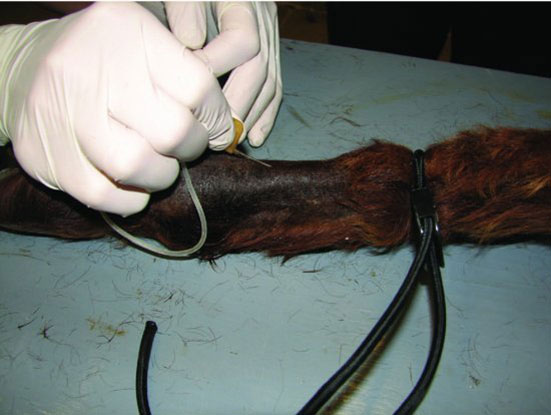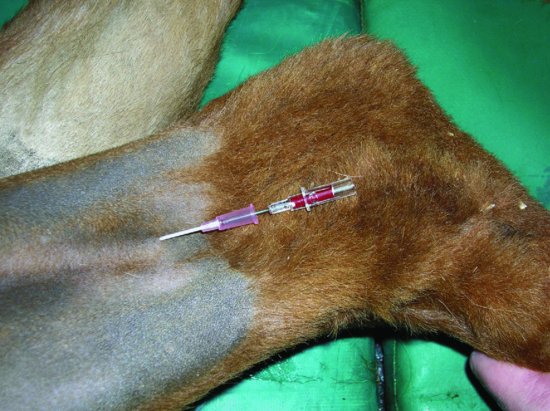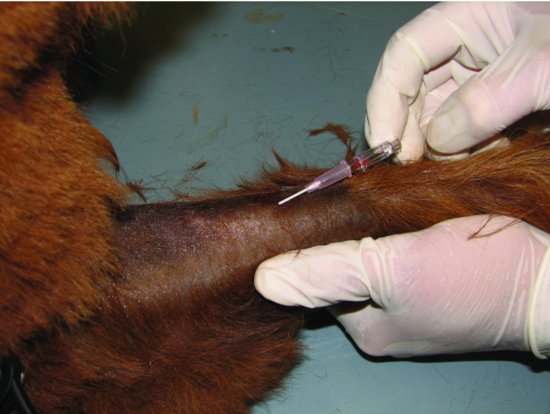Figure 47.2 Placement of a butterfly catheter into the dorsal common digital vein. The vein lies on the midline, and the catheter is initially inserted at about a 30-degree angle. Any visible and accessible vein in this region may be used for perfusion.

Figure 47.3 Catheterization of the lateral saphenous vein of a llama. A tourniquet is being used to occlude the vein at the level of the gastrocnemius muscle at the proximal tibia.

For distal limb anesthesia, 5 mL of 2% lidocaine HCl may be administered through the catheter, which will be distributed and result in anesthesia of the limb distal to the tourniquet. This allows for the performance of painful procedures of the soft tissues and bone. The tourniquet should not remain in place for longer than 2 hours before removal.
For local perfusion of antimicrobials, the goal is to achieve high concentrations of antimicrobials locally to increase bactericidal activity. Aminoglycosides exhibit concentration-dependent bactericidal effect, meaning that they simply need to reach high concentrations to achieve lethal effect, and are commonly used for RIV perfusion in horses. Beta-lactam antimicrobials are time-dependent antimicrobials, meaning that their concentrations must remain above MIC for a prolonged period of time. There is some evidence, however, that concentration may play a role in the activity of beta lactams and, therefore, they are often selected for RIV perfusion. RIV perfusion may also result in prolonged, higher concentrations of drug in the tissues as compared to systemic administration. Ceftiofur sodium is the most commonly used of the beta-lactams for RIV because, unlike other ceftiofur preparations, it is safe to give IV. RIV dosing often differs by individual, but based on the literature in other species, the author has calculated that ceftiofur sodium is generally administered at approximately 1/2 to 1 times the systemic dose for cattle (RIV dose of 1 mg/kg), while gentamycin is administered at 1/3 (RIV/dose 2 mg/kg) and amikacin at 1/10 (RIV dose 2 mg/kg) the systemic doses for horses.
Stay updated, free articles. Join our Telegram channel

Full access? Get Clinical Tree



